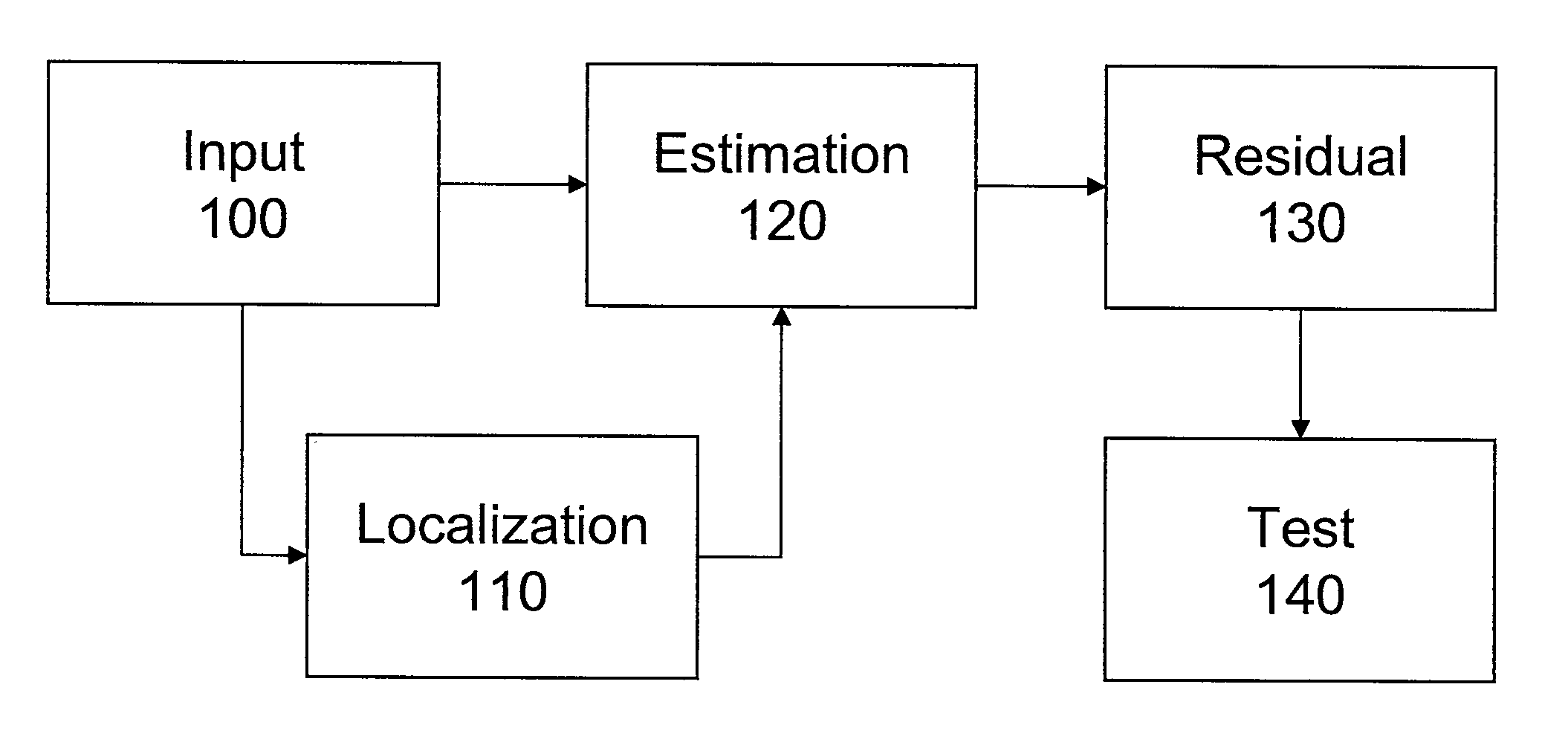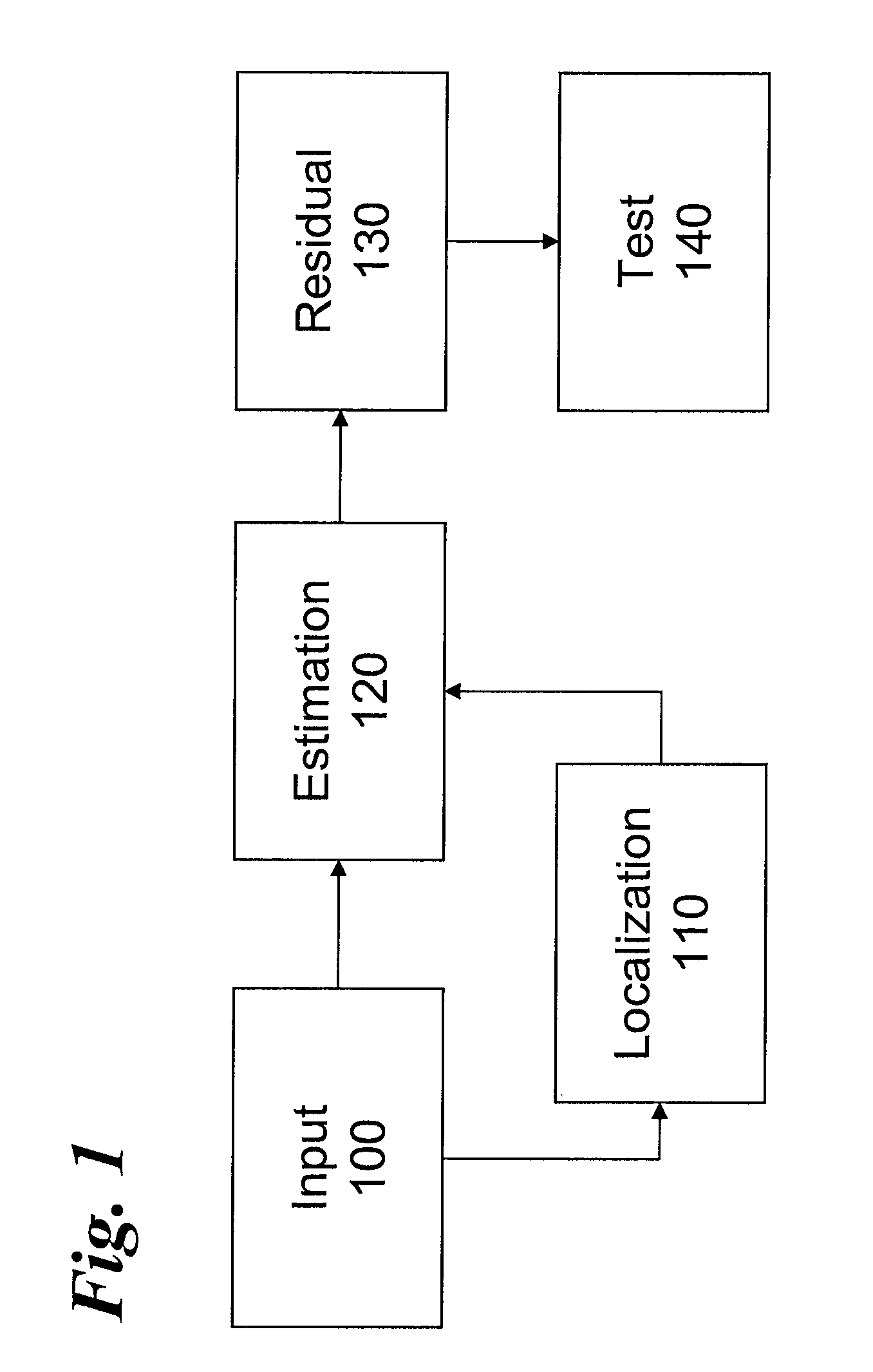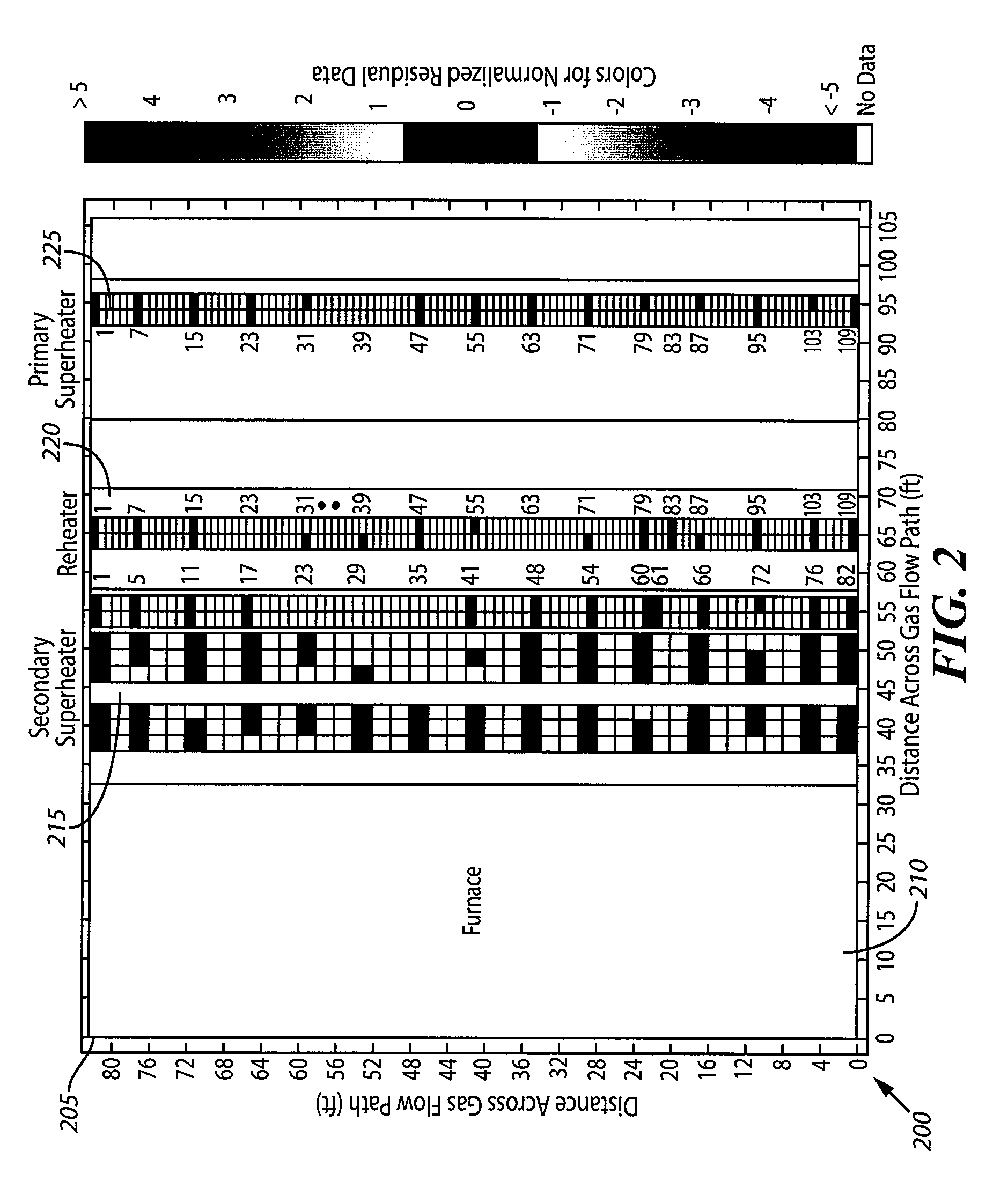Kernel-based method for detecting boiler tube leaks
a boiler tube and kernel-based technology, applied in the direction of nuclear elements, testing/monitoring control systems, instruments, etc., can solve the problems of large heat exchangers used by commercial coal-fired power plants that are prone to tube leaks, steam tubes located in the superheat/reheat section of boilers are prone to cascading tube failures, and the effect of accurate accoun
- Summary
- Abstract
- Description
- Claims
- Application Information
AI Technical Summary
Benefits of technology
Problems solved by technology
Method used
Image
Examples
example
[0060]Turning to FIG. 3, two plots are shown. A first plot 300 shows the raw data 305 and the corresponding model estimate 307 of a pressure drop sensor from a boiler in an air heater section. The difference between the raw data 305 and the estimate 307 is the residual 315 which is shown in the bottom plot 310. The residual 315 is tested against statistically determined upper and lower thresholds 320 and 322 respectively. As can be seen, the estimate 307 and the raw data 305 are very close, and the residual 315 is well behaved between thresholds 320 and 322 until late in the plots, where a residual exceedance 325 is seen corresponding to a shut down of the boiler for repair. The model of the invention found no problem with this portion of the boiler.
[0061]Turning to FIG. 4, a corresponding parallel air heater section of the boiler of FIG. 3 is shown, again with two plots. The top plot 400 shows the raw data 405 and the corresponding model estimate 407 of a pressure drop sensor from ...
PUM
 Login to View More
Login to View More Abstract
Description
Claims
Application Information
 Login to View More
Login to View More - R&D
- Intellectual Property
- Life Sciences
- Materials
- Tech Scout
- Unparalleled Data Quality
- Higher Quality Content
- 60% Fewer Hallucinations
Browse by: Latest US Patents, China's latest patents, Technical Efficacy Thesaurus, Application Domain, Technology Topic, Popular Technical Reports.
© 2025 PatSnap. All rights reserved.Legal|Privacy policy|Modern Slavery Act Transparency Statement|Sitemap|About US| Contact US: help@patsnap.com



